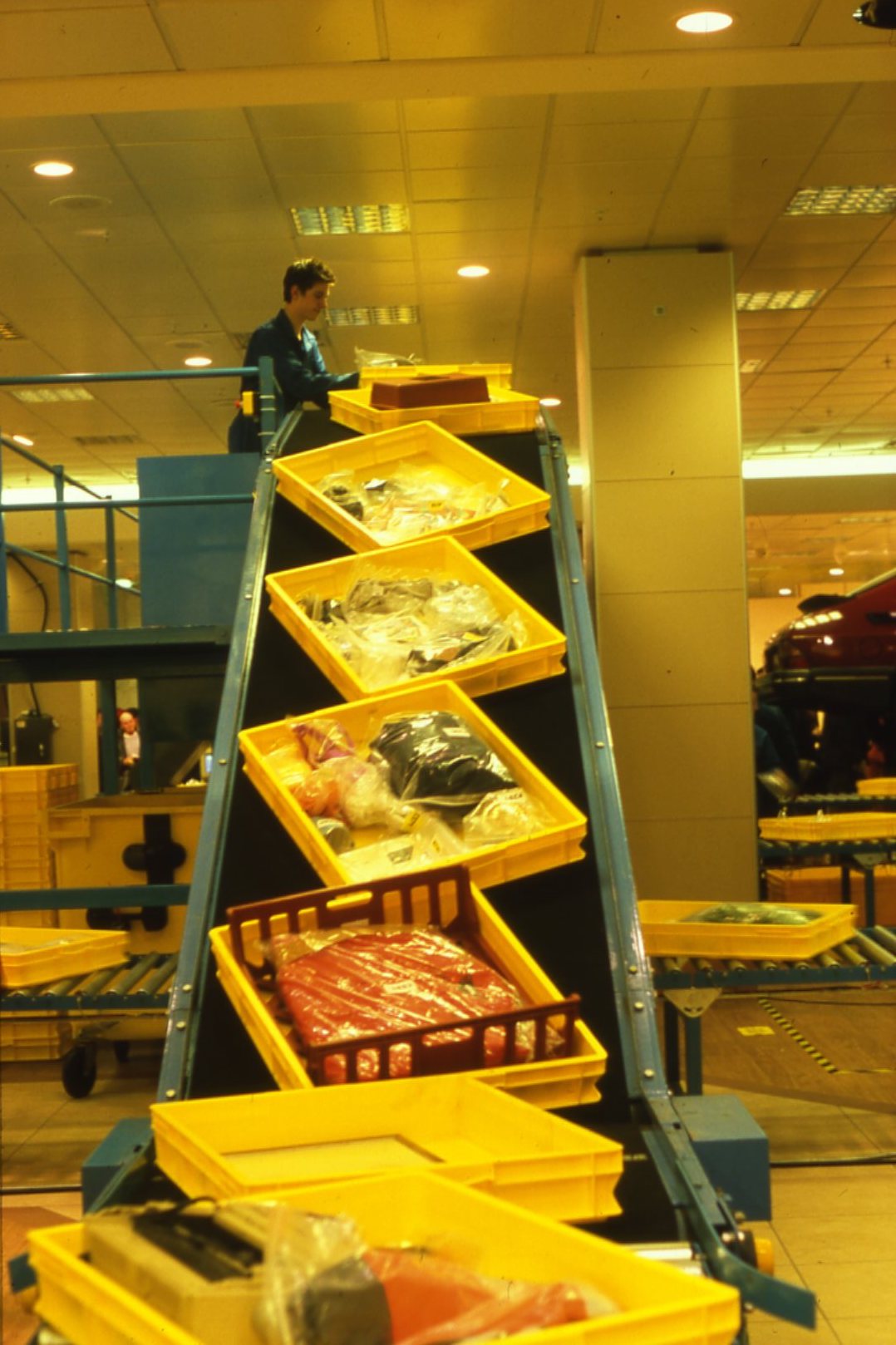
What would you save first in a fire? It’s a question most of us have pondered at some point in our lives, and the answer is usually sentimental: photographs, letters, treasured trinkets. The idea of wilfully ridding yourself not only of these personal items but everything you own is not an idea that we readily entertain. It is unsurprising, then, that Michael Landy’s decision in 2001 to destroy every single one of his possessions in a vacant department store on Oxford Street, London’s busiest shopping thoroughfare, felt almost sacrilegious. Why would anyone in their right mind choose to undertake such an absurd and painful task? This was Break Down, a two-week long performance which came just at the turn of the Millenium.
I was eleven years old when I encountered the project, and it changed the way that I understood art. Sentimental I know, but to clarify: before I saw Break Down, I thought that all art was boring; after Break Down, I realized that it didn’t have to be. It goes without saying that it also expanded my idea of where art could happen. Here was art that tricked you into looking at it, even while you were doing something as banal as going shopping. Out one afternoon with my family amongst the crowds, we noticed that the C&A store at Marble Arch, where we had previously shopped for winter hats and gloves, had suddenly whirred back into life after a period of sitting vacant.

“What do we have to lose when our love letters are contained in emails and our photographs uploaded automatically to the Cloud?”
To look in was to register a production line, complete with elaborate conveyor belts that looped around the shop floor, large machinery and staff in overalls. In we wandered. A man was diligently taking a hammer to item after item as they travelled past him on the belt, each one packed in a clear plastic bag and neatly labelled. His focus struck me, as well as his utter seriousness about something that seemed so perverse. Here was a factory line so twisted that all it could spew was fine grains of glass and plastic from video tapes and Ikea furniture. These were tipped into large vitrines in the street-facing windows, previously reserved for displays of the newest arrivals to the store.
“I was immersed in the anti-consumerist position, thinking about the status of commodities—people don’t feel the need to question the validity of consumerism as a way of life,” Landy explained in an interview with James Lingwood, co-director of Artangel. It is intriguing to consider Landy’s position on consumerism almost twenty years on, at a time when the internet has made it possible to live without the stuff that we once surrounded ourselves with. Digital nomadism is a real way of life, and Marie Kondo’s minimalism reigns supreme. Spotify and Apple Music have replaced CDs and records for many, while films can also be streamed online, and even books can be kept on a Kindle. What do we have to lose when our love letters are contained in emails and our photographs uploaded automatically to the Cloud?

Landy’s Break Down is entirely of its time, an important snapshot of a moment that no longer exists, right down to the meticulous inventory of 7227 items that the artist spent a year compiling prior to the destruction. “British Telecom Kingfisher 2 black plastic answer machine with two audio cassettes, one for incoming and one for outgoing calls”, one entry reads, “18 metre spool of grey three-core earth electrical cable,” another one goes. The obsolete technology that populates the list harks back to a time before our most prized possession was the online data stored about us, so easily hacked and—crucially—almost impossible to destroy.





